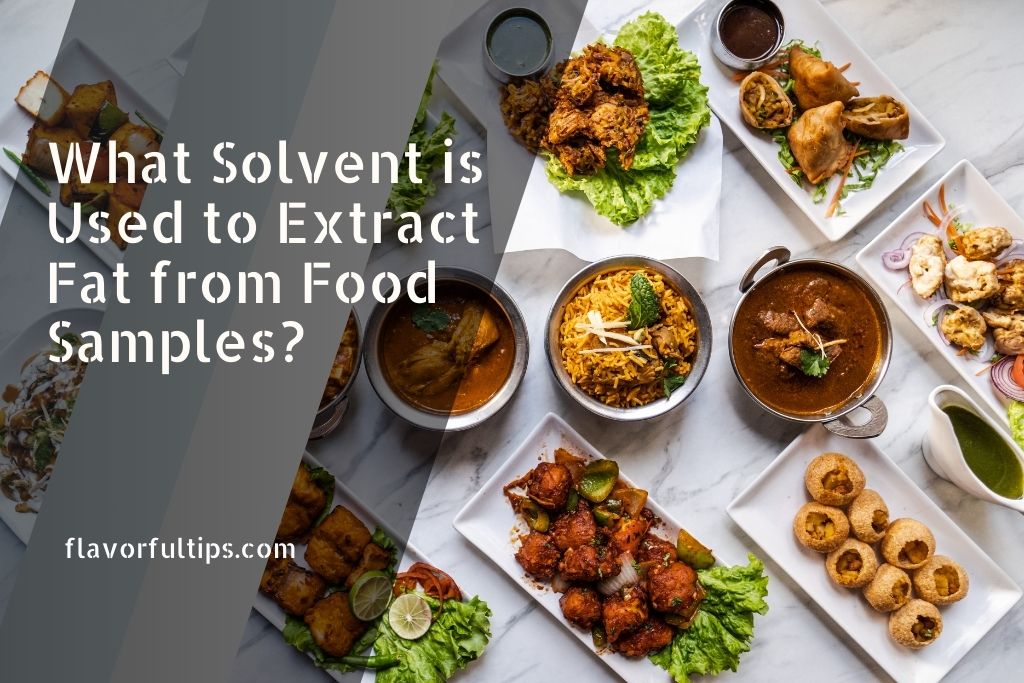When it comes to analyzing the nutritional content of food, one of the key components to consider is fat. Fat plays a crucial role in our diets, providing essential fatty acids and contributing to the flavor and texture of many foods. To accurately determine the fat content in various food samples, scientists and food analysts often use a process called fat extraction. In this blog, we’ll explore what solvent is used to extract fat from food samples, why this method is important, and how it works in the simplest terms possible.
Why Extract Fat from Food Samples?
Understanding the fat content in different food items is essential for several reasons:
- Nutritional Labeling: Food manufacturers need to accurately label their products with nutritional information, including fat content, to help consumers make informed dietary choices.
- Quality Control: In the food industry, quality control ensures that products meet certain standards and maintain consistent taste and texture. Fat content affects these qualities.
- Research and Development: Scientists and researchers study the composition of various foods to improve recipes, develop healthier options, and address dietary concerns.
- Regulatory Compliance: Government regulations often set limits on the fat content in certain foods, such as low-fat or reduced-fat products.
To determine the fat content accurately, it is essential to extract fat from food samples using an appropriate solvent.
The Role of Solvents in Fat Extraction
The process of fat extraction relies on solvents, which are substances capable of dissolving fats. These solvents work by breaking down the fat molecules in the food sample and separating them from other components, such as water, proteins, and carbohydrates. The choice of solvent is crucial as it affects the accuracy and efficiency of the fat extraction process.
What Solvent is Used to Extract Fat from Food Samples?
- Ether: Ether was one of the earliest solvents used for fat extraction, but it is rarely used today due to its flammable and potentially hazardous nature. Its use has been largely replaced by safer alternatives.
- Hexane: Hexane is one of the most widely used solvents for fat extraction. It is a relatively inexpensive, non-polar solvent that efficiently dissolves fats while leaving other components intact. Hexane is commonly used in food laboratories and industries.
- Petroleum Ether: Petroleum ether is another non-polar solvent used for fat extraction. It is similar to hexane but has a lower boiling point. Petroleum ether is effective in extracting fats from various food samples.
- Diethyl Ether: Diethyl ether is a highly volatile and flammable solvent that was once commonly used for fat extraction. However, due to its safety concerns, it has been largely replaced by hexane and other safer solvents.
- Blends of Solvents: In some cases, a mixture of solvents may be used to enhance the extraction process’s efficiency and specificity. These blends are carefully chosen based on the specific requirements of the analysis.
The Fat Extraction Process in Simple Terms
Now that we understand the importance of fat extraction and the solvents involved, let’s break down the fat extraction process in the simplest terms possible:
- Sample Preparation: The first step is to prepare the food sample. This may involve grinding, chopping, or homogenizing the sample to make it more suitable for extraction.
- Solvent Extraction: The prepared sample is then mixed with an appropriate solvent (e.g., hexane). The solvent’s role is to dissolve the fats present in the sample while leaving other components behind.
- Separation: The mixture of sample and solvent is then agitated or shaken to ensure thorough mixing. This allows the solvent to interact with the fats, causing them to dissolve.
- Filtration: After the fats are dissolved, the mixture is filtered to separate the solvent, now containing dissolved fat, from the solid components of the sample.
- Evaporation: The next step is to evaporate the solvent from the extracted fat. This leaves behind only the fat, which can then be weighed to determine its quantity.
- Calculation: Finally, the fat content is calculated as a percentage of the sample’s total weight, providing valuable information about its nutritional composition.
Safety Considerations
It’s essential to emphasize that while fat extraction is a valuable analytical technique, safety precautions must be taken when working with solvents like hexane or petroleum ether. These precautions include proper ventilation, avoiding open flames, and using appropriate personal protective equipment (PPE).
Conclusion
In the world of food analysis and quality control, understanding the fat content of various food samples is of paramount importance. The use of solvents like hexane and petroleum ether for fat extraction allows scientists, food manufacturers, and researchers to accurately determine the fat content, contributing to improved product labeling, quality control, and overall food science research.
While the process of fat extraction might seem complex, its importance in ensuring food safety and nutritional accuracy cannot be overstated. Solvents play a critical role in this process, helping to isolate and quantify fats, making them a fundamental component of food analysis and research.


